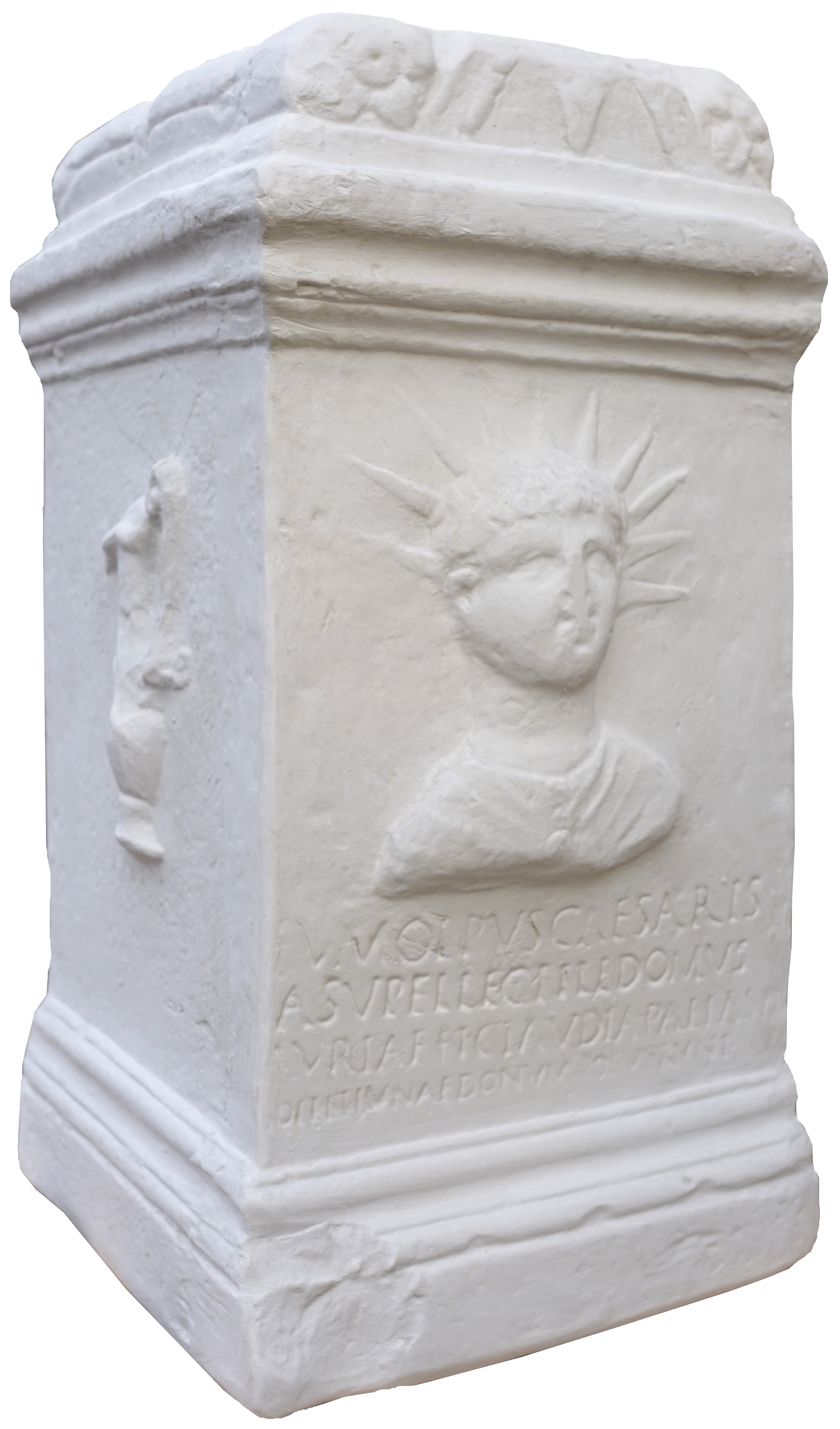





Code art.: 14461
Price: 550,00 €
Stock availability: 1
The Roman altars were part of the dedicatory monuments and were aimed at the Gods, or they could also be funerary monuments dedicated to the Gods Mani and/or the dead. The altars, when they were dedicated to the Gods, were located at the base of the temples, or inside a sacred enclosure. On or near the altar, priests sacrificed animals as sacrificial victims through rituals and the use of sacred objects. The upper part of the altar had a flat or hollow space, which depicted the place where the flame burned for the performance of the rite, inserted between two cylindrical pulvins tied by a ribbon and closed by a flower with petals and a central button. In some the focus was on the roof. Or it had drain holes for pouring ritual libations such as those in the mensae sepulcrales. The side faces bore the symbols of the rite in relief, namely the patera, a low and wide bowl, with which the altar was poured and the urceus, a pitcher, which contained the liquid to be poured. On the front there was the epigraph or images. Generally these ares derive from a very ancient cult, even pre-Roman that was linked to the culture of the Moon and the Bull. The bull symbolized with its horns a lunar cult, so often in the Ares dedicated to the Gods the heads of bulls joined together make garlands appeared at the corners.
Sizes and weight are referred in Inches and Pounds| Width: | 14.57 |
| Height: | 24.41 |
| Depth: | 12.2 |
| Material: | Gesso / Plaster |